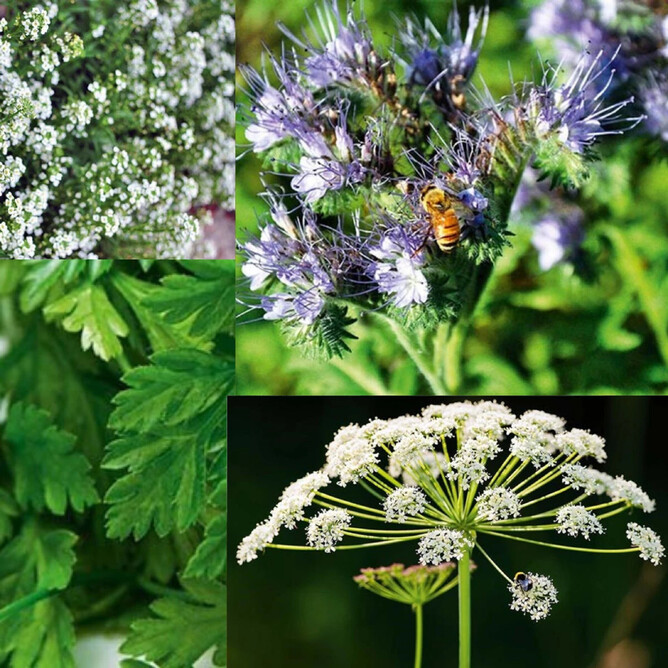Feed the Bees
If you’re like us at Lavender Row and you have honey bees at your place or nearby, then plenty of food now will mean more yummy honey this summer. The key to good bee health is a continual supply of diverse pollen and nectar from natural sources. Bees consume pollen as a protein and vitamin source and nectar for energy. While gathering these resources, they move pollen from one plant to another thus benefiting farm and garden alike by pollinating crops and other plants.
But it’s not just about honey - these pollinators are critical to our food production cycle. And it’s not just bees that we should be planting for – it’s all the other “good guys” - pollinators and beneficial insects like hoverflies, lacewings, ladybirds and parasitic wasps who will go after aphids and other plant pests.
So, what should we plant to feed the good guys? Beneficial insects tend to have small mouthparts so they prefer florets or individual flowers whose petals together form a small, shallow pattern. They also like flowers which provide a big landing pad and plants with umbrella-like parts such as coriander, parsley, chervil, dill, fennel, Queen Anne’s Lace and parsnip. Strategic planting of these and other insectary plants will attract beneficial insects throughout the year.
Plant a range of flower types, colours, perennials, annuals etc. Large interconnected patches planted close to the crop you are wanting to protect works better than small isolated patches; while long grass or hedges provide a refuge for beneficial insects to overwinter in.
In the field or orchard, you can plant in strips or blocks, or as individual plants within a crop. You can also plant in hedgerows or in larger areas set aside outside the crop. You can even use them as cover crops between crop rows during the growing season or over winter.
Some wonderful native options include cordylines, flax, hebe, hoheria, olearia, manuka and rata. And if you want to choose bee friendly trees and shrubs for planting in waterway margins, shelterbelts, field edges, under pivots and along roadsides, have a look at the regional guides provided by Trees for Bees. https://treesforbeesnz.org/regional-plant-guides


